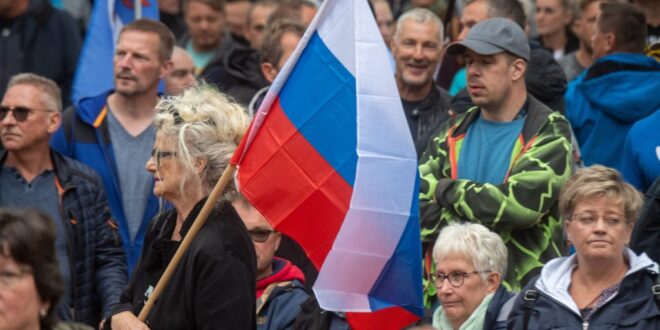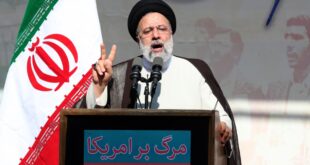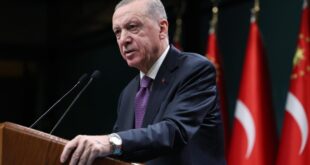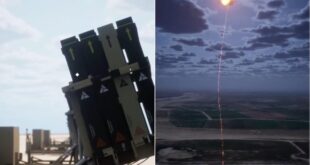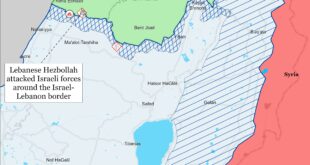On September 30, two days after the publication of this post, the US government announced a new series of sanctions against top Russian officials (including Central Bank Governor Elvira Nabiullina), business leaders, and others. The United States is also targeting military procurement and sanctions-evasion networks, while tightening export controls (as we propose below). But there are still many more options to ratchet up the pressure on the Kremlin.
Vladimir Putin is nervous. Following Ukraine’s successful counterattack this month, the Russian president responded by making nuclear threats while preparing a new annexation of Ukrainian territory and the mobilization of hundreds of thousands of reservists. These moves should only serve to intensify US and European pressure on Russia, both military and economic.
While Western nations have remained largely united in punishing Putin with economic measures, there is much more to be done to counter his escalation. Here’s how the Group of Seven (G7) and its allies can build on what they’ve already established to undermine the Kremlin’s goals in Ukraine and beyond.
Price cap on Russian oil: Big, bold, and untested
The biggest economic move of the past few months was the US-led effort that convinced the G7 to impose a purchasing price cap for Russian oil, which will take effect on December 5. The theory behind the proposal is that keeping Russian barrels on the market would accomplish the dual goal of constraining Russia’s revenues while also keeping global prices down.
The subject of much debate and skepticism from energy experts and oil executives—one of whom privately told us that it was crazy—the price cap is an untested and complicated mechanism that will reportedly rely on an attestation process that many worry will prove too difficult to implement. Skepticism aside, the United States and Europe needed to do something to reduce the Kremlin’s foreign-exchange earnings from oil (its number one export), which have increased year-on-year despite exporters offering discounted prices amid the broader economic sanctions regime imposed on Russia.
To be sure, the price cap will face pitfalls. Those include the possibility that the mechanism will prove unusable in markets that already struggle with humanitarian sanctions that have more straightforward exemptions; whether other countries will abide by the price cap enough to materially lower Russia’s revenues; and whether inevitable Russian cheating will scare otherwise willing intermediaries away from brokering Russian oil altogether. Yet perhaps most important is how Putin will respond to this new measure: While Russia cannot cease oil exports for long, it can do so in the short run—and very well may, in order to wreak economic damage on Europe. Putin has already cut gas sales, hoping to panic the Germans into abandoning Ukraine, though it has not worked so far.
Given the European Union’s (EU) plans to curtail Russian oil imports anyway, a Russian oil export cut-off would also affect non-European buyers—countries even Putin’s Kremlin might prefer not to alienate.
Ultimately, the success of the price cap gambit will be measured by whether it can accomplish both goals of reducing Russian revenues and stabilizing global oil markets (and, by extension, the global economy). It will not be perfect; but isolated reports of cheating, or other nits that many will pick, will not mean that it has failed. If the United States can balance this novel policy well enough to harm Russia’s most valuable export revenue source without causing undue harm to the West, it may well be a success even with some leakage.
The next big debate: Repurposing frozen Russian state assets
Another policy debate likely to gain prominence is what to do about the more than three hundred billion dollars in Russian state assets—plus billions more in private assets—that have been frozen by Western governments. In the first two weeks after Putin’s February 24 invasion, the G7, working fast and in secret, locked down these assets in a move that appears to have caught Russia’s leadership by surprise. Many have argued for seizing some or all of those assets to help repair the damage caused by Russia’s war and help Ukraine as it fights for its survival.
These arguments will intensify as the United States and other governments keep asking their legislatures for funds to support Ukraine. But the truth is that there is no easy way to make use of frozen Russian funds for its reconstruction. For its part, the Biden administration has created the KleptoCapture task force to forfeit private funds, including those in the hands of Russian oligarchs and others tied to Putin and implicated in corruption, sanctions evasion, or other unlawful activity. It’s a good idea; but while viable, such options will take more time than Kyiv has to begin reconstructing the country.
Moreover, it’s not private assets that should be the real target, but the frozen Russian state assets. That’s where the money is, and the Russian state is solely to the blame for the atrocities committed against Ukraine. Yet there does not appear to be solid legal ground to seize or unilaterally make such moves. Arguments that the US and other G7 governments already have the authority to take control of Russia’s state assets—perhaps because of Russia’s violations of international law by invading Ukraine—strike us as too tenuous to support.
For the United States, using existing sanctions authorities to seize assets is even less of an option, since these do not allow for the forfeiture of funds (unless the United States is in direct armed conflict with Russia). It is also worth pointing out that the United States does not have sole control over the vast majority of these Russian state funds, so any actions taken unilaterally would have little practical effect.
There are also broader questions around the precedent such a move would set. On Wednesday at the Atlantic Council and Atlantik-Brücke’s Frankfurt Forum on US-European GeoEconomics, Daleep Singh, a former deputy national security adviser in the White House who helped devise the sanctions response to Russia’s invasion this year, said seizing Russian state assets would require coordination across the world’s central banks because of the “multigenerational” implications. “Once countries feel their assets are no longer safe in the custody of the New York Fed or any other central bank, there could be ripple effects of which the unintended consequences are severe,” Singh said.
If more short-term seizure and repurposing of frozen Russian state assets is beyond reach, two less immediate options remain. One is to use the KleptoCapture task force to target private assets for seizure and repurpose them for Ukraine; the other would be a G7 commitment not to release any of the frozen Russian central bank assets until there is a settlement to use some portion of those funds to rebuild Ukraine. This would be simply a policy statement pledging to use the assets at some unspecified point in the future—but it is an immediate step that could reassure Kyiv it won’t be left holding the bill for Russia’s unprovoked war.
Whatever the practical challenges, Putin’s relentless escalation is putting pressure on Western nations to guarantee some use of Russian funds for Ukraine’s eventual reconstruction. That pressure should fall on G7 legislatures, as repurposing of frozen assets will require new laws on the books.
Keeping up the pressure
Apart from the aforementioned initiatives, there is much else to be done to enforce the current sanctions and other tools of economic statecraft against Putin’s Russia. Sanctions, export controls, and other steps need consistent refinement and enforcement to prevent evasion, leakage, and their deterioration over time. Over the past few months, the pace of Western sanctions targeting Russia had slowed, possibly due to attention being diverted to other topics like the price cap.
But that lull may be over. The US Treasury Department sanctions on September 15 targeting evasion tactics were likely meant to signal a return to a more regularly scheduled sanctions cadence, with frequent rounds aimed at shoring up Russian evasion techniques and broadening the reach of existing measures. Given Putin’s escalation, the United States and its allies are likely to move in this direction.
Key among the additional sanctions options is to target Russian banks and payment networks. One obvious target is also one that is less likely to be fully sanctioned, given its role in energy payments: Gazprombank, by far the largest and most sophisticated Russian bank that hasn’t been fully sanctioned due to concerns that it could roil energy markets. But because energy trade with Russia will already become complex under the price-cap proposal, full blocking sanctions against Gazprombank (with a corresponding license to allow energy payments and trade to flow) may not actually have any negative spillover effects. Still, while Gazprombank would make an impactful target, overly nervous policymakers may well hold back.
The more likely focus of new banking sanctions on Russia will be on smaller institutions that have recently increased their business (especially that which is linked to the Kremlin). Look especially for those that are “nesting” (or hiding) payments on behalf of those already sanctioned large Russian banks. It is easy to move a checking account from one bank to another—but not so easy to move a full business relationship, replete with credit lines and other products and services. It is almost certain that a handful of smaller banks are in fact nesting transactions for larger ones such as Sberbank and VTB; expect them to be a prime target.
The September 15 action was a move in this direction, as the US Treasury targeted executive officers of several Russian payment-settlement networks, including the Mir credit card network, over reported plans to use the networks for sanctions evasion. Two major Turkish banks (one of them a former Sberbank subsidiary) promptly announced that they were suspending the use of one of those settlement networks immediately following Treasury sanctions. Expect a continued focus on these payment alternatives, including cryptocurrencies and other digital assets, as the US Treasury and other sanctions experts in the Biden administration bear down on Russian efforts to work around the initial US sanctions.
Another probable focus of Western sanctions in the short term will be harmonizing sanctions lists with the EU, United Kingdom, and others to create a level and consistent playing field for Western economic actors and bring to bear the full power of these large economies behind their actions. It’s slow and exacting work; the pace of sanctions in the aftermath of Russia’s invasion was swift and sometimes disjointed. This was to be expected, as each jurisdiction has its own quirks and governments were moving quickly to respond to Russia’s aggression; but even with Putin’s most recent escalation, the United States and Europe should still smooth out the differences between their sanctions lists. (The price cap idea is a move in that direction, as the non-EU G7 members will implement similar sanctions and carve-outs to make the scheme work, matching the EU’s sixth sanctions package.)
Harmonizing these lists is important for targeting Russian oligarchs and Putin’s cronies and agents. Some of the richest Russians have been sanctioned in the United Kingdom or EU but not the United States, which creates opportunities for sanctions evasion and confusion in implementation. These individuals’ enterprises can cause knock-on effects that may have substantial linkages in Western nations, but those effects can be mitigated through proper licensing (much like Citgo’s continued operations in the United States despite being owned by the sanctioned Venezuelan government). Moreover, identifying such oligarch assets in jurisdictions where they have yet to be fully sanctioned could provide better opportunities for KleptoCapture, since most such oligarchs have faced longstanding allegations of corruption and criminal activity.
Many of those oligarchs are involved with metals and mining companies, an area of the Russian economy that has not seen as steep a fall-off from sanctions as some others. Russian companies in this sector are strategically important and less sanctioned than other major sectors but do carry some spillover risks to global inflation as they are often integrated into supply chains. The G7 may examine which firms it can safely go after without feeding global inflation, but likely will approach the sector with some caution.
The G7 will likely push forward with sanctions against Russia’s partnership with Iran involving weaponized drones or with North Korea over military supplies. The United States has already targeted Russia’s drone purchases from Iran, and it is reasonable to expect that those external linkages will remain rife with opportunities for additional sanctions as Russia struggles with internal production of necessary items for its military. Such sanctions may yield little, since North Korea and Iran are already heavily sanctioned, but they would be a cautionary signal to other countries thinking of supplying weapons to Russia.
Export controls will be the final area of focus. The Biden administration significantly expanded restrictions early on during the 2022 invasion, and nearly all Commerce Department-controlled goods now require an export license to be exported to Russia. This means that the Kremlin has been left with a paucity of microchips and other crucial technology items. These measures have produced major results, including well-documented problems with Russian production of automobiles, trucks, and even tanks—so much so that Putin has reiterated the importance of economic espionage to Russia’s foreign intelligence service.
These export controls are vast and impactful, but there has been little discernible enforcement of them against violators to date. That trend is highly unlikely to continue: As the United States cracks down on other forms of sanctions evasion, it will certainly focus on where Russia is pivoting to procure these critical components that export controls have denied it. Crucially, such enforcement tends to make compliance across the industry better, so any enforcement actions will also further constrain Russian procurement efforts.
All this economic pressure by the G7 is, as we have written before, a longer-term strategy to isolate Russia under Putinism, rather than a tactic to achieve fast results. In the short term, the outcome of the war will depend on the fighting qualities of the Ukrainian and Russian armies; the extent and quality of weapons sent to Ukraine from the United States, Europe, and other countries; intelligence sharing; and continued economic support for Ukraine.
But as we learned during the Soviet period, economic pressure can have a profound impact if the West keeps it up—and if the Putinist Russian economy remains oligarch-dominated without space for entrepreneurship or the rule of law (as is likely).
So far, the G7 and the wider West have done a solid job targeting the Russian economy; they now need to keep up the pressure. Putin is ever more dangerous and his system ever more aggressive. But both are also failing, as the Ukraine war demonstrates. The United States, Europe, and allied countries have key advantages. They must keep their nerve in the difficult period to come.
 Eurasia Press & News
Eurasia Press & News
